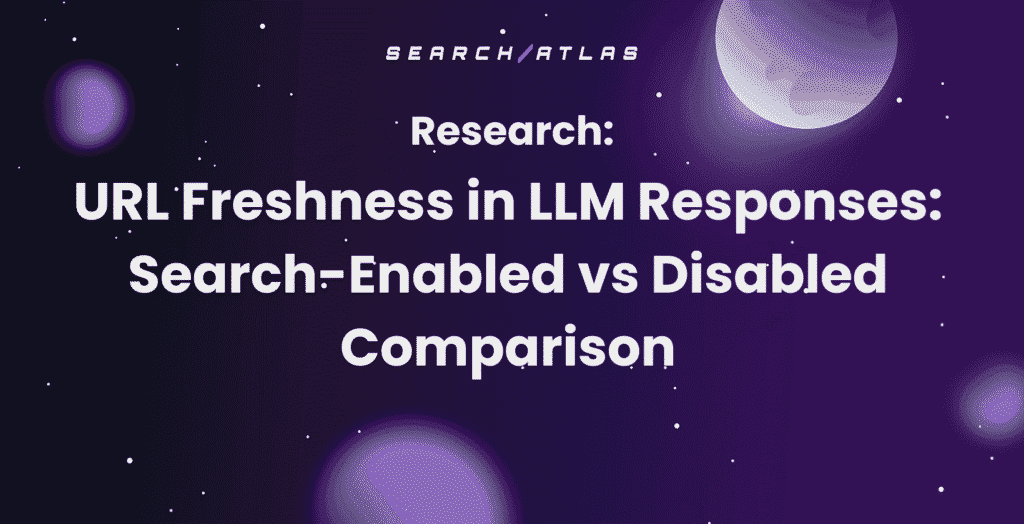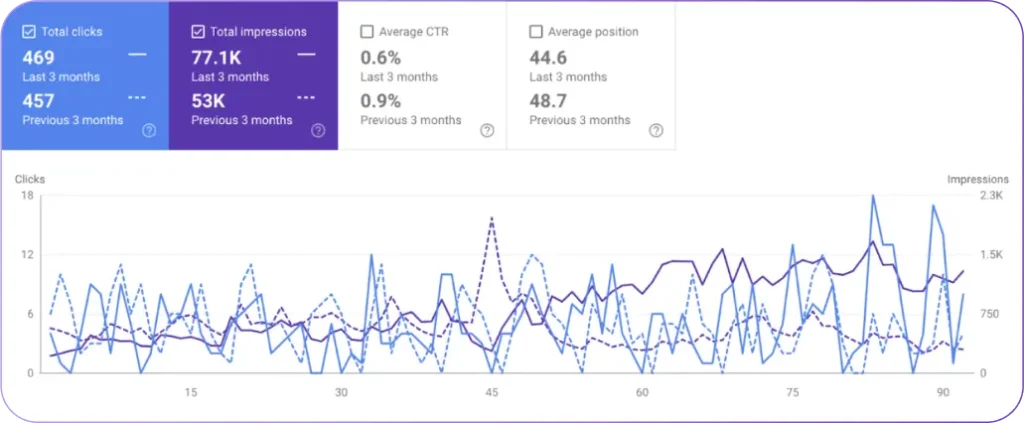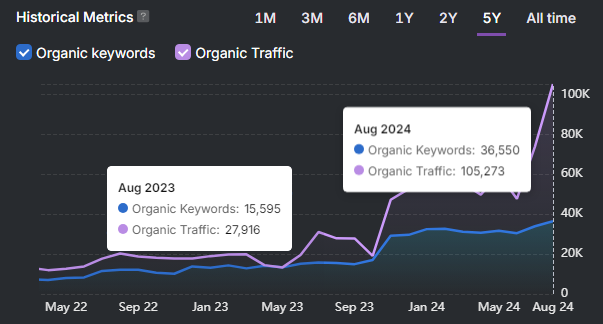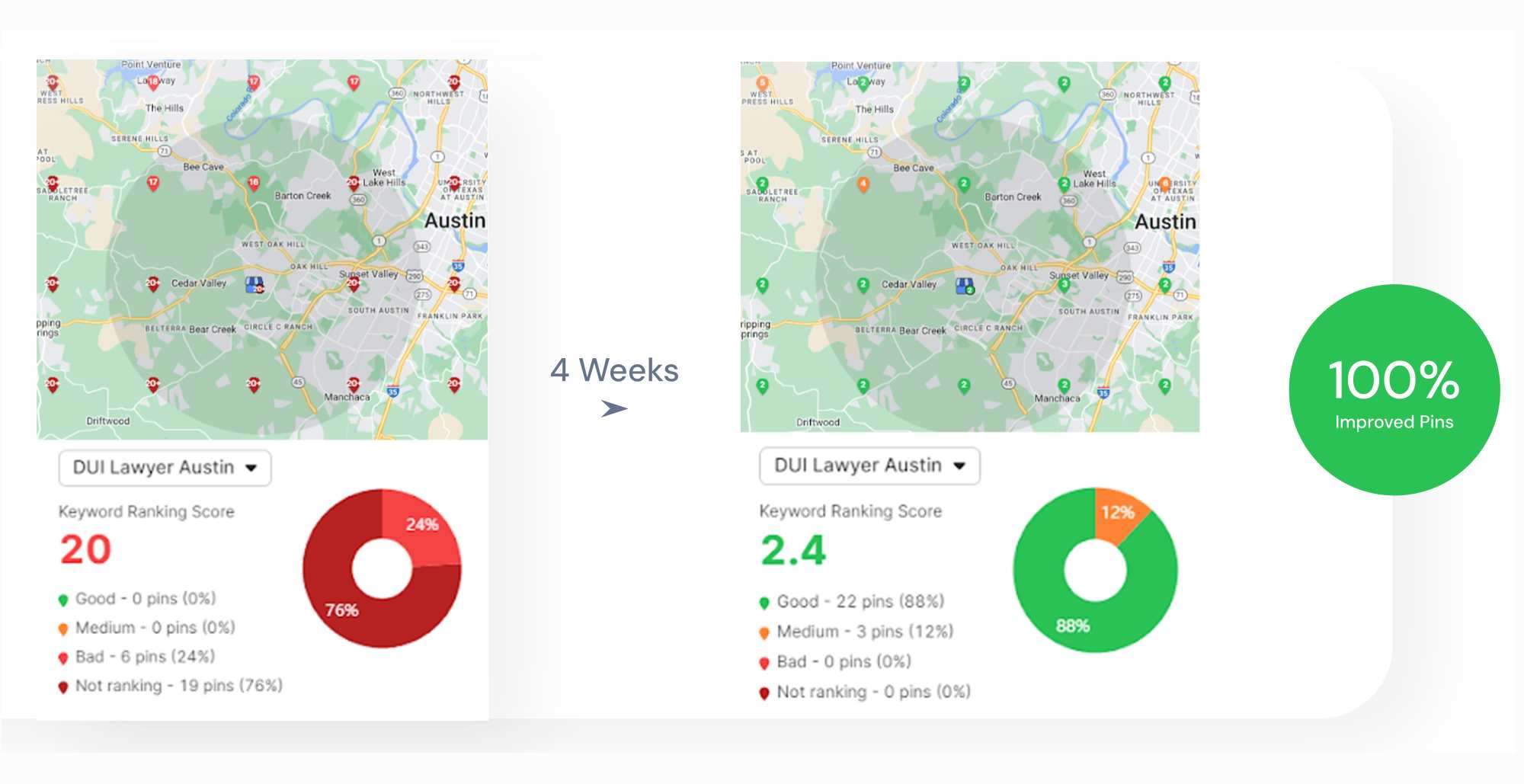Profound shifts in how search engines deliver answers have opened up a brand-new category of tools focusing on generative engine optimization (GEO) and AI search visibility.
If your organization is looking at Profound AI alternatives, you shouldn’t judge platforms solely on their ability to track visibility. You need to look for tools that can also automate optimization, execute fixes, and measure the time it takes to see an impact across the various large language models (LLMs).
In this guide, you’ll learn how to compare alternative platforms based on their capabilities , and what features actually drive real citation gains within LLMs. We’ll also cover how pricing and white-label options affect both agencies and small-to-midsize businesses (SMBs) , and give you practical playbooks and forecasts for the future of AI search through 2029. We’ll survey the leading alternatives, dive into SearchAtlas’s execution-first capabilities, provide a key feature buyer checklist, compare value and scalability, present real-world results, and finish with recommendations for forward-looking monitoring and operations.
Throughout this discussion, we’ll use GEO and LLM visibility terms to make vendor comparisons practical and suggest workflows that turn raw AI signals into measurable business results.
What Are the Leading Alternatives to Profound AI for Generative Engine Optimization?
Generative Engine Optimization (GEO) alternatives generally fall into two main categories:
- Visibility-first platforms that simply map where LLM citations appear.
- Execution-first platforms that combine tracking with automated SEO actions.
The best Profound AI alternatives blend coverage of multiple LLMs with timely AI-crawler analytics. Crucially, they also provide clear paths to fix citation drift using both on-page and off-page tactics.
As you evaluate tools, prioritize those that offer explicit per-model citation metrics, a good freshness cadence, and clear optimization playbooks—don’t just settle for standard dashboards. The next sections identify which types of platforms qualify and contrast monitoring-only vendors with those that actually allow you to follow through on fixes.
Which platforms offer comprehensive AI search visibility beyond Profound AI?

Comprehensive AI search visibility tools must offer coverage for multiple LLMs (like models such as ChatGPT, Claude, Gemini, and other AI responder services). They also need to track citation rate and answer rank, and measure drift over time to highlight volatility.
These systems use AI crawlers to take in prompts and model outputs. They then deliver key metrics like citation frequency, the context of the excerpted answer, and sentiment or confidence signals for each model.
Continuous updates are vital because models change so fast. A good visibility tool has to strike a balance between covering a broad range of models and maintaining crawl freshness to catch fleeting opportunities. Before you decide if a platform’s data can reliably power your optimization workflows, you absolutely need to understand how it collects and normalizes these signals.
The Role of AI in Modern SEO Strategies for Enhanced Visibility
SEO has become an important tool for businesses looking to increase their online visibility and reach potential customers. As technology continues to develop, Artificial Intelligence (AI) is becoming a key component of modern SEO strategies. AI allows search engines to better understand the context and user intent behind search queries, resulting in more effective SEO campaigns. In this article, we’ll take a closer look at the role that AI plays in modernSEO strategies and how it can help businessesachieve greater success with their campaigns.
The role of AI in modern SEO strategies, 2023
How do SearchAtlas and other tools compare as Profound AI competitors?
A major way to distinguish Profound AI alternatives is whether the platform is monitor-only or whether it supports the full track → act → measure workflows.
Some providers are excellent at mapping LLM answers across different models. However, they often stop short of automated fixes, which forces you into manual handoffs to your content and technical teams. Other platforms pull together automation, content creation, and reporting into one place. This removes operational headaches and speeds up the time-to-impact.
Agencies and SMBs that need fast results will prefer platforms that reduce tool fragmentation. They do this by integrating automation agents, content optimization features, and white-label reporting into a single, unified view. This “execution-first” approach significantly shortens the cycle from when you detect a loss of citation to taking corrective action and measuring the share of AI voice you’ve regained.
How Does SearchAtlas Provide a Superior Alternative to Profound AI?

SearchAtlas presents itself as an integrated alternative. It pairs AI visibility tracking with automation and execution features specifically designed for agencies and growth teams.
Its strategy is built on three core pillars:
- Automated Execution: This is handled by an AI SEO agent.
- Dedicated LLM Visibility Measurement: It covers multiple models.
- An All-in-One Platform Mindset: This consolidates tools that you’d typically find spread across many different subscriptions.
This combination aims to transform insights about citation drift and answer placement into prioritized actions. These actions can range from on-page edits and content expansion to Google Business Profile (GBP) optimization and targeted PR. The goal is simple: shorten the time-to-impact and improve measurable AI visibility.
What is OTTO SEO and how does it automate AI SEO and GEO tasks?
OTTO SEO is an AI-powered automation agent. It’s designed to execute common technical and content tasks without you having to manually intervene repeatedly.
When properly configured, OTTO can:
- Identify on-page issues.
- Generate prioritized optimization recommendations.
- Implement safe content edits.
- Handle routine GBP updates or link-building workflows.
This automation loop reduces friction by translating LLM visibility signals into concrete tasks with clear owner assignments and follow-up measurement. In practice, automation lowers the operational burden on teams. It consolidates repetitive fixes and allows specialists to focus on more strategic work. This creates a reliable cadence of improvements instead of constant, ad-hoc triage.
| Capability | Optimization Enabled? | Notes |
| LLM Visibility | Yes — tracking + optimization actions | Tracks citation rate and maps corrective content actions to citation opportunities |
| OTTO SEO Automation | Yes — automated fixes and task execution | Converts visibility signals into prioritized tasks and edits for faster impact |
| GBP & Local SEO Automation | Yes — profile updates and citation management | Automates parts of local presence management to protect share of AI voice in local queries |
This comparison highlights how integrating measurement and execution can quickly close the gap between finding AI answer placement problems and recovering visibility through prioritized action.
How does SearchAtlas’s LLM Visibility track brand presence across AI models?
LLM Visibility is all about detecting where a brand or piece of content is cited within AI-generated answers. It also quantifies key metrics: share of voice across models, answer rank within a result, and citation drift over time.
The methodology involves prompt sampling, model querying, and extraction logic. This is how it normalizes citations into comparable metrics across a wide array of LLM outputs.
These signals immediately lead to actionable prioritization : pages with a falling citation share become candidates for entity strengthening, prompt-aware rewrites, or structured data enhancements.
Continuous monitoring of multiple models is crucial. It ensures that teams detect cross-model shifts early on and can apply targeted optimizations to keep or reclaim AI visibility.
What Are the Key Features to Look for in AI SEO and GEO Tools?
When purchasing GEO and AI visibility tools, your decisions should revolve around features that truly move the needle:
- Automated execution.
- Broad LLM coverage.
- Content optimization workflows.
- Google Business Profile (GBP) integration for local AI answers.
- Robust reporting that connects directly to business Key Performance Indicators (KPIs).
Feature selection naturally depends on your organizational needs. Agencies need white-label dashboards and multi-client scaling , while SMBs will prioritize affordability and tool consolidation. The practical buyer checklist below will help you prioritize which feature clusters to evaluate first when assessing Profound AI alternatives.
Different features deliver concrete value in GEO workflows. The table below explains why each feature matters and the practical impact you should expect.
| Feature | Why it matters | Practical impact |
| AI crawler analytics | Reveals how models cite content and how often | Enables evidence-based prioritization of pages to optimize |
| Integrated automation | Converts signals into executed tasks | Shortens time-to-impact and reduces operational overhead |
| Content optimization tools | Provide prompt-aware rewrites and topical mapping | Improves entity prominence and answer relevance in LLM outputs |
Why is integrated AI automation important for SEO and GEO success?
Integrated AI automation is vital because it makes optimization workflows scalable, consistent, and predictable. It turns detection into execution without requiring a large increase in headcount.
Automation maintains consistency across many pages , enforces best practices , and reduces delayed responses to citation drift—delays that can ultimately cost you a share of the AI voice. For agencies, automation creates repeatable, resalable, white-label processes. For in-house teams, it directs scarce resources toward strategic initiatives instead of repetitive tasks.
The net result is faster, more measurable improvements in LLM visibility and, consequently, downstream conversions.
How do content creation and optimization tools enhance AI search visibility?
Content tools that are prompt-aware, prioritize entity prominence, and offer topical depth help align your pages with the answer formats that LLMs prefer.
Practical tactics include:
- Structuring content to surface key entities early.
- Using conversational lead-ins that mimic how users might phrase a prompt.
- Adding concise answer snippets that models can reliably cite.
Tools that combine topical mapping with AI-assisted drafts and automated optimization loops allow teams to quickly iterate and test which formulations result in higher citation rates. This systematic approach creates more stable AI citations over time and makes you less vulnerable to citation drift.
The most effective content optimizations for LLMs are:
- Using clear entity signals and concise definitions so models can easily cite your content.
- Structuring pages with prompt-like headings and short, answer-focused paragraphs to match the AI output style.
- Expanding topical depth around key entities to give models robust context to draw from.
How Do Pricing and Value Compare Among Profound AI Alternatives?
Comparing pricing and value means looking beyond the sticker price. You need to assess the total cost of ownership:
- How many tools are replaced?
- How much time is saved through automation?
- Is it white-label ready for agencies?
- What is the measurable ROI from regained AI visibility?
Some alternatives primarily charge for data access and model scans , while others bundle optimization and automation into platform tiers. Buyers should calculate the expected savings from consolidating SaaS tools and reducing manual labor when evaluating alternatives. Agencies, in particular, should weigh the value of white-label dashboards and automated reporting features, as these directly support client retention and billing.
| Plan / Approach | Monthly Cost (or Range) | Best for / Limitations |
| Data-focused visibility | Varies — typically per-query or tiered | Best for research teams; may lack execution features |
| Execution-first platforms | Varies — bundles visibility + automation | Best for teams wanting track → act → measure; may replace several point tools |
| White-label solutions | Varies — add-on or included | Best for agencies; requires onboarding to scale multi-client reporting |
What makes SearchAtlas affordable for agencies and SMBs compared to Profound AI?
SearchAtlas argues for its affordability through tool consolidation and white-label scalability. By replacing multiple subscriptions (like rank tracking, site health, content tooling, and AI visibility scanning) with one unified platform , teams can reduce per-client operational costs and simplify reporting.
For agencies, this simplifies billing and shortens the onboarding time for new clients by centralizing both monitoring and execution. For SMBs, having consolidated features lowers the barrier to adopting GEO workflows without having to build a complex internal automation stack.
Interested teams can take advantage of trial or demo pathways to validate the time-to-value with representative accounts.
Here are some cost-savings examples to consider when evaluating platforms:
- Replacing disparate rank tracking and content tooling with a unified stack reduces subscription and feature overlaps.
- Automating routine technical fixes lowers the agency or contractor hours spent on triage.
- White-label reporting templates reduce the time needed to create client-ready deliverables.
Which alternatives offer scalable white-label and multi-client solutions?
Scalable white-label solutions generally include:
- Dashboard templating.
- Scheduled client reporting.
- Role-based access.
- Multi-client tracking that aggregates LLM visibility metrics per account.
Agencies should actively look for automated report generation, templated playbooks, and API or export options. These features are essential for integrating the platform with billing and CRM systems. These capabilities streamline delivery and free up account teams to focus on strategy instead of repetitive report preparation. Ultimately, the operational gains from multi-client automation make it possible to profitably offer GEO services at scale.
What Are Real-World Success Stories Using Profound AI Alternatives?
Businesses that adopt execution-first GEO platforms report measurable improvements. These include faster remediation of citation drift and clearer client ROI. Typical outcomes are increased share of AI voice on target queries , higher conversion rates from AI-sourced answers , and reduced time between detection and remediation thanks to automated workflows.
Demonstrations usually show a mix of immediate wins from targeted on-page rewrites and sustained gains from systematic topical expansion and GBP optimization.
How have businesses improved AI visibility and SEO results with SearchAtlas?
Organizations using SearchAtlas’s combined visibility and automation approach can prioritize pages experiencing the highest citation decay. They can apply fixes driven by OTTO and then re-measure citation share to confirm the impact.
Reported improvements include:
- Regained citation placements in AI answers within weeks after targeted optimizations.
- Measurable uplift in enterprise or client dashboards following automated GBP updates.
These mini-case outcomes demonstrate how pairing LLM visibility metrics with execution can reduce time-to-impact and produce repeatable results across various client portfolios. Teams evaluating alternatives should ask for demos that replicate their most representative queries to validate similar improvements.
What lessons can agencies learn from case studies of GEO tool adoption?
Agencies that successfully adopt GEO tooling share several operational lessons:
- Centralize monitoring to detect citation shifts across models.
- Build templated playbooks that map different signal types to specific actions.
- Surface client-facing metrics that translate AI visibility into clear business impact.
They also recommend establishing a schedule for automated audits and human review to maintain a balance between scale and quality control. Finally, integrating white-label reporting into recurring billing cycles helps justify the platform’s incremental cost by showing predictable visibility gains and better client KPIs.
Key agency takeaways for GEO adoption are:
- Create a clear link from visibility metric to action so teams can respond quickly to citation drift.
- Use automation for high-volume, low-complexity tasks, saving human expertise for strategic interventions.
- Standardize client reporting around share-of-AI-voice and time-to-recovery to clearly demonstrate the program’s effectiveness.
What Is the Future of AI Search and Generative Engine Optimization?
AI search will continue to shift value away from clicks and toward direct answers. This makes LLM citations and the share of AI voice absolutely critical business metrics.
Over the next few years, SEO strategies will evolve to prioritize entity authority, prompt-aware content formats, and continuous monitoring across multiple models. Organizations that embrace automated optimization loops and invest in LLM-aware content will be better positioned to capture demand. This is particularly true where users get immediate answers instead of just links.
How will AI-powered search impact SEO strategies by 2029?
By 2029, expect keyword strategies to focus more on intent and prompt alignment. Content formats will favor concise, authoritative answer blocks. Measurement frameworks will have to include LLM citation share and answer rank alongside traditional click metrics.
Content teams will need to produce modular, entity-rich assets that LLMs can easily cite. SEO operations will rely more heavily on automation to keep up with frequent model updates. Adapting to these realities now helps organizations avoid being repeatedly displaced in AI-generated answers.
Why is continuous AI visibility monitoring critical in a zero-click search world?
Continuous monitoring is vital because citation drift can happen fast. It occurs as models retrain or as new content changes the answer surfaces. Without constant vigilance, brands can lose visibility and the downstream conversions that follow AI answers.
A good monitoring cadence should combine frequent automated crawls for high-priority queries with periodic human review to validate context and strategy. Maintaining this loop—detect, act, measure—ensures a lasting presence in AI answers and provides a defensible ROI for your GEO initiatives.
Practical monitoring recommendations are:
- Monitor high-value queries daily or weekly, depending on volatility and business impact.
- Automate alerts for sudden citation loss to quickly trigger rapid remediation playbooks.
- Report share-of-AI-voice alongside traditional traffic metrics to demonstrate the program’s value.
For teams looking for an integrated platform that combines LLM visibility with automated optimization, SearchAtlas offers a bundled approach that perfectly aligns with the execution-first model described here. Its combination of OTTO SEO automation and LLM Visibility is designed to reduce tool sprawl, speed up time-to-impact, and provide agency-friendly white-label capabilities. Organizations evaluating Profound AI alternatives should request a demo or trial to validate how quickly the platform moves from detection to action across their most important queries and client scenarios.













